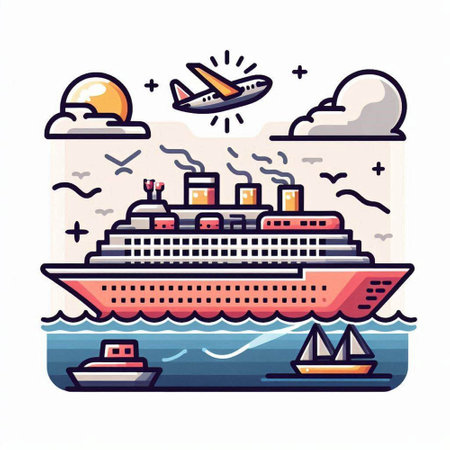1. Introduction: Revolutionising Angling in India
Fishing has long been woven into the cultural and economic fabric of India, where rivers, lakes, and coastal waters have sustained communities for generations. Traditionally, Indian anglers have relied on local wisdom, weather patterns, and family-taught skills to bring home a good catch. But today, as technology rapidly evolves, the humble fishing rod is being joined by drones and tracking devices, ushering in a new era of post-modern angling. This blend of time-tested techniques and cutting-edge gadgets is reshaping how Indians interact with their waters—making fishing smarter, more efficient, and sometimes even more sustainable. As we delve into this revolution, we’ll see how modern gear is not only enhancing the angler’s experience but also respecting India’s rich fishing heritage.
2. Jugaad Meets Innovation: Selecting the Right Drone for Indian Waters
India’s fishing communities are legendary for their jugaad—an ingenious knack for improvising with limited means. When it comes to post-modern fishing, this resourcefulness seamlessly blends with advanced drone technology, creating a unique approach that suits India’s diverse aquatic environments and economic realities. Whether casting nets in the Ganga, exploring Kerala’s backwaters, or braving the Arabian Sea off Gujarat, Indian fishermen are evaluating drones through a lens shaped by necessity, climate, and budget.
Key Considerations for Drone Selection in India
Local fishermen must weigh various factors when picking a drone:
| Parameter | Jugaad Approach | Modern Tech Solution |
|---|---|---|
| Budget Constraints | Pooling funds in co-operatives; opting for refurbished or locally assembled drones | Choosing entry-level waterproof drones like DJI Mini SE or indigenous options like ideaForge’s Q Series |
| Weather Resistance | DIY waterproof casings using plastic sheets or recycled materials | Selecting drones rated IP53/IP67 for monsoon resilience |
| Battery Life | Clever use of power banks and solar charging setups at riverbanks | Drones with swappable batteries and energy-efficient flight modes |
| Fish Detection Capability | Mounting affordable fish finders or smartphones on drones with makeshift brackets | Drones integrated with sonar sensors and thermal cameras |
The Indian Way: Blending Local Skills & Smart Tech
The result is a uniquely Indian methodology—drones are often modified to fly lower during heavy winds in coastal Odisha or fitted with local GPS trackers when signal strength dips in remote Assam wetlands. Fishermen in Maharashtra may repurpose agricultural quadcopters to carry heavier payloads or drop bait farther out at sea. Meanwhile, community WhatsApp groups share real-time drone footage, enabling collective decision-making before venturing out.
Adapting to Rivers, Lakes, and Coasts
In rivers like the Yamuna and Godavari, compact drones scout shallow waters to map fish schools hidden beneath floating debris. Around Tamil Nadu’s coastline, weather-hardened models withstand salty air and sudden squalls. In Rajasthan’s lakes, lightweight drones take off from narrow boats without sophisticated launch pads. Every region brings its own twist—demonstrating how India’s fishing sector is not only adopting but also adapting post-modern tools to fit local conditions.

3. Tracking Devices: Desi Approaches to Smart Fishing
When it comes to smart fishing in India, local ingenuity meets modern tech in truly unique ways. While global brands offer high-end tracking devices, Indian fishers often opt for more affordable and practical options that suit both their budgets and the realities of desi fishing environments.
Affordable & Popular Tracking Gadgets
In the bustling harbours of Kerala or the expansive deltas of the Ganges, GPS fish finders have become a favourite among small-scale and commercial fishers alike. These gadgets, available at local markets or via online platforms like Flipkart and Amazon India, are celebrated for their ease of use and robustness against saltwater and humidity—two unavoidable aspects of Indian waters.
Adapting GPS Fish Finders for Desi Boats
Unlike luxury yachts or imported trawlers, the average Indian fishing boat is humble and practical—a wooden vallam in Kerala or a mechanized dinghy along the Andhra coast. Fishers here often retrofit GPS fish finders onto their boats using jugaad methods: mounting with waterproof tapes, securing power supplies with recycled batteries, and even using mobile phones as display screens through Bluetooth connectivity. This spirit of adaptation ensures that high-tech solutions remain accessible to everyone from family-run crews to solo river fishers.
Stories from Kerala’s Backwaters to the Ganges Delta
In Alappuzha, fishermen recall how tracking devices helped them avoid monsoon storms by providing real-time updates on weather patterns—a lifesaver during unpredictable seasons. Meanwhile, in the Sundarbans’ tangled waterways, local communities share tales of using handheld trackers to locate shoals of hilsa and prawns with precision unthinkable just a decade ago. These stories reveal not only technological progress but also the resilience and creativity at the heart of Indian fishing culture.
4. Blending Tradition and Tech: Co-Existence on the Fishing Scene
Across India’s vast coastline—from Kutch to Kanyakumari—fishing has always been a blend of skill, intuition, and community wisdom. Today, post-modern fishing doesn’t mean abandoning these deep-rooted traditions; rather, it’s about enhancing them with cutting-edge gadgets. From Kerala’s traditional Chinese nets to West Bengal’s intricate baiting styles, technology is finding its place not as a replacement but as a respectful companion.
Respecting the Fisherfolk Wisdom
Indian fisherfolk possess generations of knowledge: reading tides, understanding fish migration, and selecting the perfect net or bait for local waters. Drones and trackers are now being used to supplement this expertise—not override it. For example, while a drone may help spot shoals faster, it’s still the seasoned fisherman who knows when and how to cast the net for an optimal catch.
Enhancement, Not Replacement: A Comparative Look
| Traditional Technique | How Gadgets Enhance It | Community Perspective |
|---|---|---|
| Payaal Jal (Cast Nets) | Drones identify fish-rich zones before casting | Reduces trial-and-error without losing the artistry of throwing the net |
| Live Bait Fishing | GPS trackers monitor boat drift to maintain ideal bait location | Keeps bait in productive areas; respects local environmental rhythms |
| Gillnetting in Backwaters | Sensors track water temperature and salinity changes | Combines data with elders’ intuition for timing the catch |
Cultural Harmony on the Water
The integration of new tech is also handled with sensitivity toward local customs and rituals. Many communities conduct blessings for both boats and new gadgets before setting out—a fusion of faith in tradition and belief in innovation. Ultimately, Indian fishing culture celebrates co-existence: acknowledging that modern tools can empower, but never replace, the heart and soul of traditional practice.
Legal, Ethical, and Environmental Considerations
When it comes to post-modern fishing with drones and tracking devices in India, it is crucial to understand the legal, ethical, and environmental framework that surrounds these technologies. The Indian government has set specific guidelines for drone usage under the Directorate General of Civil Aviation (DGCA), requiring operators to register drones and seek permissions for flying in most regions. For those looking to innovate in the angling world, it’s important to check if your gear and activities comply with the Unmanned Aircraft System (UAS) Rules 2021 and state-level fisheries regulations.
Understanding Local Legalities
Indian waters are governed not only by national laws but also by a patchwork of state regulations. Certain states restrict drone usage near sensitive coastal areas or national parks like Sundarbans or Chilika Lake, where biodiversity is particularly fragile. Fishing communities along the Konkan coast or Kerala backwaters may have local rules on fish tracking devices due to concerns about overexploitation. Always consult local authorities before deploying any high-tech equipment on water bodies.
Ethical Debates in Indian Angling Circles
The rise of technology-aided fishing has sparked debates among traditional fisherfolk and modern anglers alike. Many worry that drones give unfair advantages, potentially sidelining age-old skills passed down through generations. There is also an ongoing discussion about whether using real-time tracking gadgets disrupts the balance between human ingenuity and nature’s unpredictability—a subject frequently brought up by eco-activists from Goa to Tamil Nadu.
Conservation and Eco-Activist Perspectives
Eco-conscious groups like WWF India and local NGOs such as Dakshin Foundation are vocal about sustainable fishing practices. They warn that unchecked use of tracking devices could lead to overfishing of vulnerable species like hilsa or mahseer, which are already under pressure. Collaborations between fishers, conservationists, and technology experts are emerging—for instance, controlled drone monitoring for research rather than mass harvesting—to ensure tech adoption aligns with India’s biodiversity goals.
Ultimately, embracing post-modern fishing tools in India means balancing innovation with responsibility. By staying informed about legal boundaries, listening to ethical concerns raised by local communities, and supporting conservation-driven initiatives, Indian anglers can enjoy the thrill of tech-savvy fishing while preserving aquatic ecosystems for future generations.
6. Future of Fishing in India: Digital Dreams on the Water
The future of fishing in India is shimmering with digital possibilities, as new technologies become more accessible and affordable across both urban coasts and rural riverbanks. With the spread of smartphones and internet data packs, the once-traditional world of angling is transforming, led by a generation that thrives on innovation and digital connectivity.
Youth Leading the Charge
Today’s Indian youth are not only early adopters of drones and tracking devices for fishing but also enthusiastic creators and sharers of knowledge. Platforms like YouTube have become virtual ghats where young anglers upload vlogs of their latest catches, gear reviews, or drone-fishing tutorials in Hindi, Tamil, Bengali, and other regional languages. These videos blend local humour with technical know-how, making high-tech fishing relatable from Kerala’s backwaters to the banks of the Ganges.
WhatsApp Groups: The New Fishing Communities
Gone are the days when fishing tips were handed down only at tea stalls or family gatherings. Now, WhatsApp groups buzz with real-time updates about the best spots, new gadgets, seasonal fish movements, and safety advisories. These digital mandalis cut across caste, age, and geography—creating a networked community where everyone from college students in Pune to fishermen in Andhra Pradesh can share strategies or troubleshoot issues with their gear.
Speculating Tomorrow: Tech for All?
As drones and trackers become cheaper and more robust, it’s easy to imagine a near future where almost every serious angler—from Mumbai’s city lakes to Assam’s wild rivers—has access to these tools. Innovations like solar-powered bait boats or AI-driven fish finders could soon be locally assembled using jugaad (creative improvisation), making them even more relevant to Indian needs. Meanwhile, social media trends may shape everything from sustainable practices to new competitions, as viral challenges encourage eco-friendly techniques or showcase record-breaking catches.
Ultimately, the digital dream is not just about catching more fish—it’s about creating a shared culture that celebrates technology without losing sight of tradition. As India’s youth continue to blend old wisdom with new gadgets, post-modern fishing promises an exciting journey where innovation rides every wave.


